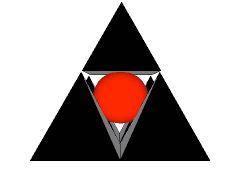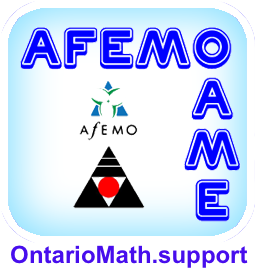President's Message - March 2008
Happy Hippy Hoppy Spring One and All
JACQUELINE HILL
jacqueline.hill@oame.on.ca
As my year as President comes to a close I would just like to take inventory. In my first communications to the board of directors of OAME I revealed my message of "In the classroom and beyond". I have spent my year trying to keep this in mind. I believe that everything has to start with teachers in the classroom and then grow. From this vantage point I also kept in mind the vision of past presidents Dan Charbonneau (The Environment) and Kathy Kubota Zarivni (Complexity Theory). I wove these two themes as well as Differentiated Instruction into the board meetings. In my president's messages I gave a "before/during and Assessing DI" as well as a "key phrases to keep in mind when you think about DI" piece.
As you think about the picture of mathematics and how Differentiated Instruction fits in, you need to keep at the forefront of your mind strategies that are going to give the students choice in their learning. One way to go about giving choice to the students is to use portfolio assessments with them. It doesn't matter if students are in grades 1-12 you can still give them choice that relates to their learning style. An example of a generic math portfolio could be:
Choose two of the following:
- create a model for your understanding of the concept
- write a short story demonstrating your understanding of the concept
- research and critique two math websites
- create a "Dear Ann Landers" column for a newspaper that describes 3 everyday uses for the concepts in this term
- create a three fold brochure to "sell" the math concepts in this unit
- write a poem or Rap song that will help you remember the content in this unit
- create a crossword puzzle that has the definitions from this unit in it
- create a word search for the definitions in this unit
- create a slide show (or power point show) to convey your understanding of the unit content
- make a dictionary of terms from this unit
- create a radio program to help listeners understand the content in this unit
- Create a card game (ie. Go fish, or concentration) dealing with a topic covered
- Your best five journal responses
- Completed Survival guide (with all exam review questions)
I ended my message last time with what I thought was a nice math problem. The problem was stated as "Using the last four digits of a phone number, how many times will the first three digits add up to the final digit? (i.e. 2316 is 2 + 3 + 1 = 6) That is, the first three digits add up to the last digit (the 6). Explain your answer using two different methods.
When I think of the process expectations it is obvious that "problem solving" has to be done in order to solve the problem. You will need to:
- select "tools and computational strategies" to go about solving the problem.
- use "reasoning and proving" when you think you have all of the possible outcomes.
- "reflect" on your solution to ensure it is reasonable.
Approach 1: An organized list. If we consider the four places for numbers _ _ _ _ Consider keeping the first two slots fixed X X _ _ Then consider keeping slots one and three fixed and see what you get X _ X _
Approach 2: Sum Patterns Start by finding the sums of 0 (only one phone number for that one 0000) Sums of 1 (1001, 0101, 0011) thus 3 cases
Etc. (note: in higher grades there is a very nice summation formula that appears in this approach)
In total there are 220 ways to have a four digit phone number such that the first three digits sum to the fourth digit.
Finally… in my first president's message I referred to those inspirational people in my life who helped me along my “mathematical pathâ€. I would like to close by again counting my blessings and thanking them for their support and encouragement along the way.
Yours in Mathematical fun,
Jacqueline Hill
Previous Message:
Tis the Season One and All
Next Message:
Connecting the dots. Who would have thought that it was so important?


















 Like us on FaceBook
Like us on FaceBook